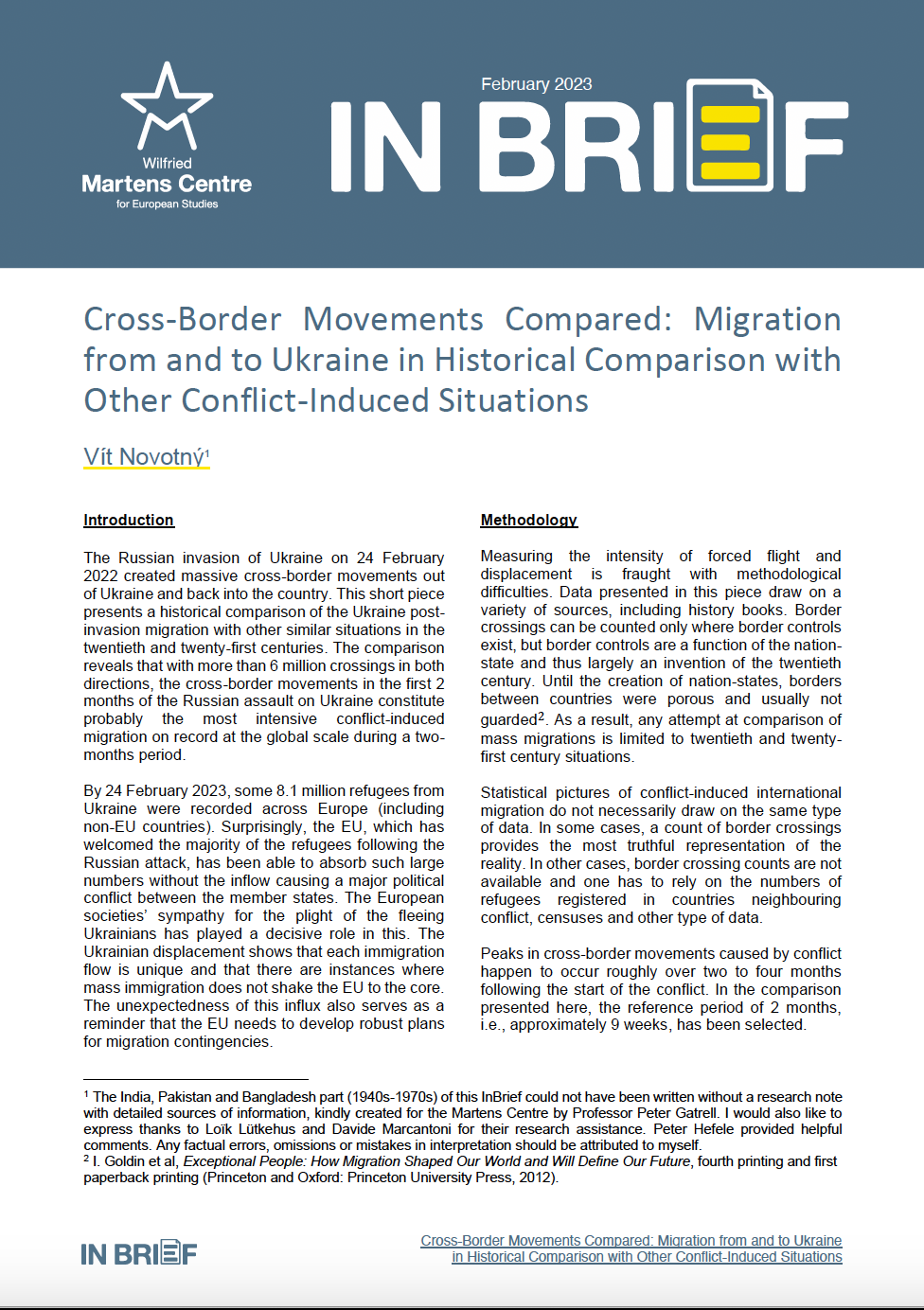Cross-Border Movements Compared: Migration from and to Ukraine in Historical Comparison with Other Conflict-Induced Situations
24 February 2023
The Russian invasion of Ukraine on 24 February 2022 created massive cross-border movements out of Ukraine and back into the country. This short piece presents a historical comparison of the Ukraine post-invasion migration with other similar situations in the twentieth and twenty-first centuries. The comparison reveals that with more than 6 million crossings in both directions, the cross-border movements in the first 2 months of the Russian assault on Ukraine constitute probably the most intensive conflict-induced migration on record at the global scale during a two-months period.
By 24 February 2023, some 8.1 million refugees from Ukraine were recorded across Europe (including non-EU countries). Surprisingly, the EU, which has welcomed the majority of the refugees following the Russian attack, has been able to absorb such large numbers without the inflow causing a major political conflict between the member states. The European societies’ sympathy for the plight of the fleeing Ukrainians has played a decisive role in this. The Ukrainian displacement shows that each immigration flow is unique and that there are instances where mass immigration does not shake the EU to the core. The unexpectedness of this influx also serves as a reminder that the EU needs to develop robust plans for migration contingencies.
ENJOYING THIS CONTENT
